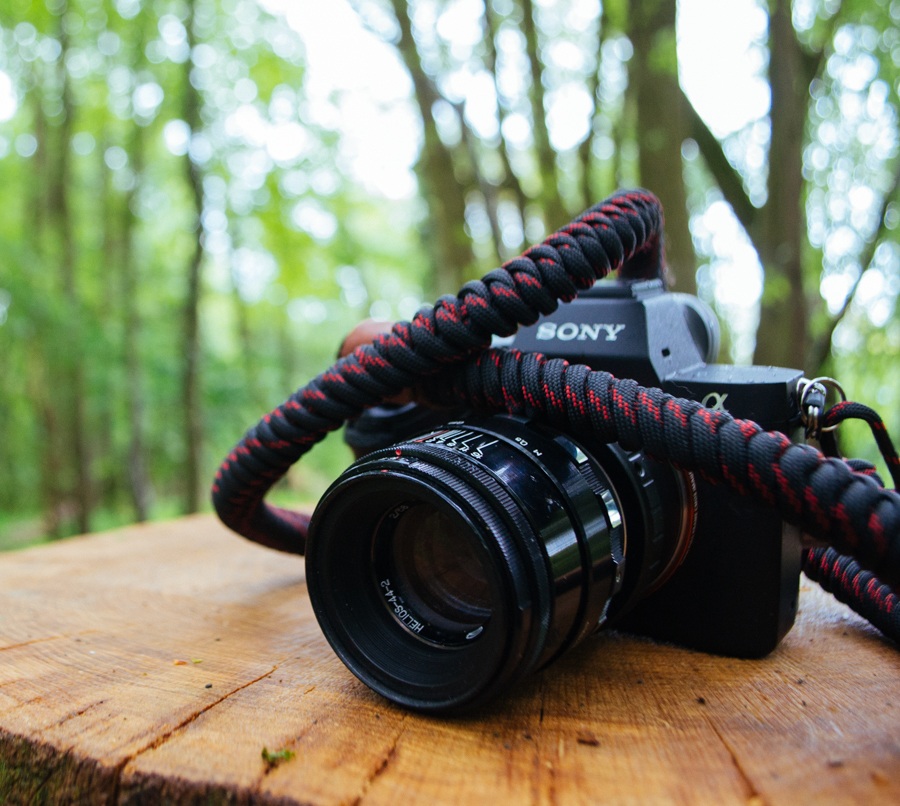Helios 44-2 Review
8th June 2017

Moving to the Sony mirrorless ecosystem has allowed me to explore some of my old heritage lenses and also explore some highly praised and recently popular lenses from history. One of the most popular (if not the most popular) legacy lenses of recent times is the Helios 44-2.
The Helios 44-2 is a soviet lens created using the Carl Zeiss Biotar formula; like the Carl Zeiss lens the Helios copied the focal length as well, The Helios 44 is actually a 58 mm prime not a 44mm like its name would suggest.
The Helios 44-2 is one of the most mass produced lenses in the world; being produced in multiple factories across the USSR from 1958 through till 1992. As a result of this mass production, the Helios lens is easy to acquire, a simple search on eBay will result in hundreds of results in varying price and quality from as low as £14 to as high as £91 (at the time of writing).
So why has a cheap mass produced Russian lens garnered a cult following? Two Words: Swirly Bokeh!
The Helios 44-2 has a unique optical quality that has resulted in the out of focus areas (Bokeh) becoming more ellipsoid the further away they are from the centre of the lens. Put simply the background appears to “swirl” around the subject matter if put at the centre of the frame. This is also known asthe Petzval effect.
This is an interesting lens! that much is obvious to see. A lens this well regarded, a relative ease of acquirement meant I had to give it a go.
My particular copy of the Helios 44-2 is made in Minsk, Belarus by the MMZ factory and has the zebra patterning on the focus ring; alternating between the silver and black bars. My copy has a maximum aperture of f2, but different copies have different maximum apertures. Personally, I think this is a very attractive lens. It almost looks brand new. I was very happy when I opened the eBay package.
The Helios is peculiar in another way in that the aperture ring in the aperture ring is at the glass end of the lens instead of the camera end. The aperture ring is also declicked, useful for video shooters but this convenience for video may be inconvenient to still shooters. The aperture ring is very easy to move and is easily changed between shots, sometimes not intentionally.
Focusing is smooth and aided by the internal focus peaking and zoom functions of the Sony A7 line of cameras. The build quality of the lens is fantastic! Built out of all metal and glass this lens is well put together. However, this solid build has caused the lens to be heavier than expected from its compact size. Personally, I don’t find this a problem, it almost adds to the quality feel of the lens but it may be worth considering if low weight is a major concern. For me, the majority of my weight reduction has already occurred by transferring to a mirrorless system of camera.
How is it to shoot…? Well despite the finickity aperture control, this lens is generally a pleasure. It is the lens that is constantly on my camera at the moment. I believe the way it renders out of focus areas is fantastic and the swirly bokeh effect is a nice addition. The effect is not always prominent at all aperture values; the best way to show off this effect is to shoot into the background with multiple lights sources at a smaller f-number such as f2 of f2.8. Backgrounds with multiple light sources include sunlit foliage, night-time streets photography or using fairy lights (led lights) to create an interesting backdrop. The swirly background decreases in prominence as you increase f-stops but the bokeh is still rendered smoothly.
There are some negative to this little lens from the USSR. Some consider the 58mm focal length to be inconvenient, there is some vignetting at the edge of the frame which is also coupled with softness especially obvious at f2; some consider a positive or a negative dependent personal preference. Depending on what version of the lens you pick up (there are a lot of variants) it suffers from increased susceptibility to flaring. These characteristics are part of the package with this lens, however, by shooting with legacy lenses instead of their modern counterparts, you are asking for a challenge. Each older lens has its own unique characteristics which make it interesting to shoot with. These ‘legacy’ lenses throw down a creative gauntlet at the feet of photographers; the rise of mirrorless systems has seen a rise in photographers pick up this gauntlet and embrace the challenge, producing incredible results.
If you’ve read this far you’ve probably realised that I like this lens.
But ultimately the question is:
Should you pick up this lens?
Why not!
It’s cheap, it produces interesting and visually stimulating images, it has a high build quality and the unique challenge of this lens has me happy with my purchase. Plus it is another option for you to offer to clients that may help you stand out from everyone else with the latest nifty fifty.
If you are looking for a good all-rounder there are better ‘legacy’ lens options out there, but if you are looking for an old lens that might just put you a little out of your comfort zone, why not?! You may fall in love with the Helios 44.